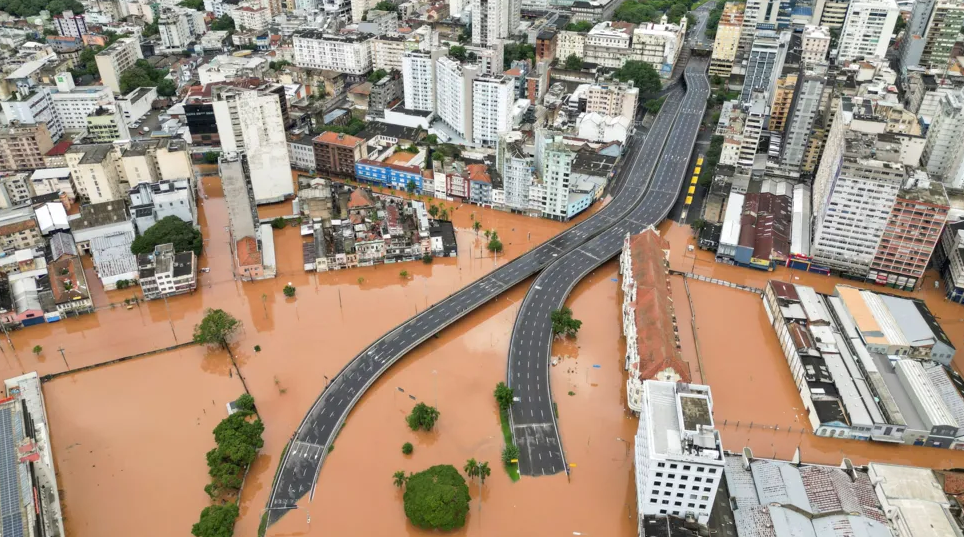极端天气影响全球 巴西南部遇史上最严重洪灾

Nearly 25,000 residents have been forced to leave their homes in Rio Grande do Sul — the state in the most southern part of Brazil — since the storms began on Saturday 27 April. In certain cities, water levels are at their highest in 150 years, according to the Brazilian Geological Service.
However they have now said the amount of rain is now starting to reduce. A rare combination of average temperatures that are hotter than usual, along with high humidity and strong winds has led to the unusual weather.
The floods have caused landslides, collapsed bridges, and turned roads into rivers throughout the state. So far, 75 people have died and more than 100 people are still missing. The governor of Rio Grande do Sul, Eduardo Leite, said on Sunday: “I repeat and insist: The devastation to which we are being subjected is extremely serious.” But he said that the country’s emergency services and other workers are doing all they can to help everyone affected. He said on social media on Tuesday 7 May that 350,000 lives have been saved as a result of their efforts.
Why is this happening? Brazil’s National Institute of Meteorology have said it’s down to a climate phenomenon called El Niño. El Niño (which means ‘the boy’ in Spanish) makes global weather warmer. It happens when water in the Eastern Pacific heats up more than normal, and creates unusually hot and stormy weather. In contrast, global weather can at times be affected by El Niño’s sister, La Niña (the girl). This occurs when water cools down more than usual in parts of the Pacific Ocean, between South America and Australia. When the sea surface temperature drops by around 3-5 degrees Celsius, La Niña is declared. This leads to cooler and drier weather on average. As such, until recently, Brazil was experiencing a lot of drought as a result of La Niña.
原创编写 版权所有 侵权必究! 每日更新 个性化阅读 英语飙升!